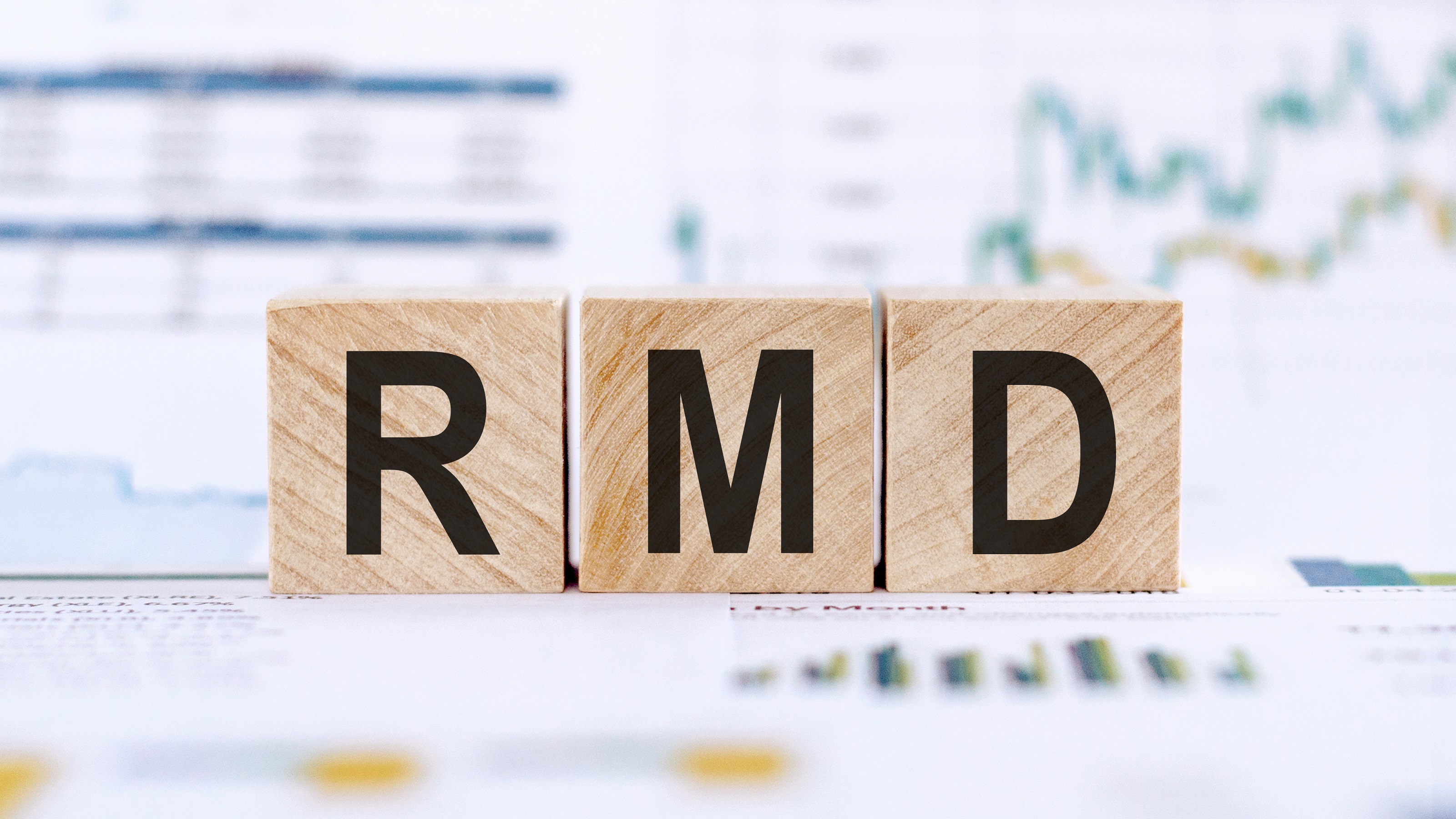Required Minimum Distributions (RMDs): Rules, Deadlines, and Important Changes to Know
Discover the ins and outs of RMDs to ensure tax compliance and optimize your retirement savings.


It is important to have a good grasp of required minimum distribution (RMD) rules and the tax implications that come with them. That can help you manage your tax obligations effectively in retirement.
To get started, here is an overview of some core RMD concepts.
Of course, if you need more detailed information, it's best to seek guidance from a qualified financial adviser or tax professional.

Sign up for Kiplinger’s Free E-Newsletters
Profit and prosper with the best of expert advice on investing, taxes, retirement, personal finance and more - straight to your e-mail.
Profit and prosper with the best of expert advice - straight to your e-mail.
What are required minimum distributions (RMDs)?
A required minimum distribution is money that must be taken out of a retirement savings plan. More specifically, RMDs are the minimum amounts that must come out of given retirement plan accounts each year once the account holder reaches a certain age.
RMDs, calculated based on a formula described below, are generally designed to ensure that retirees gradually draw down their retirement savings and pay taxes on the funds as they withdraw them.
Key Points
- Due to the SECURE 2.0 Act, the RMD age rose from 72 to 73 in 2023 and will rise again to 75 in 2033.
- RMD rules generally apply to employer-sponsored retirement plans such as traditional IRAs, 401(k)s, 403(b)s, and 457(b) plans.
- The IRS says the RMD rules also apply to traditional IRAs and IRA-based plans such as SEPs, SARSEPs, and SIMPLE IRAs.
- Inherited IRAs may be subject to different rules.
RMD Deadlines
RMD Age: When are RMDs due?
According to the IRS, April 1 is a key RMD deadline for some older adults receiving their first required distribution from an IRA, 401(k), or similar retirement plan.
That’s because the first RMD is due by April 1 of the year following the calendar year in which you reach age 73, if you reach 72 after Dec. 31, 2022. Subsequent RMDs generally have to be made by Dec. 31.
If you miss an RMD deadline or fail to pay the minimum amount, you may be subject to an IRS penalty (more on that below).
Note: Taking two RMDs in one year can have important tax implications.
Those distributions could push you into a higher tax bracket, meaning a larger portion of your Social Security income could be subject to taxes.
You could also end up paying more for Medicare Part B or Part D premiums.
- For more information, see: Is Your First RMD Due April 1?
- Also see: One Key Rule to Understanding Your RMD
How to calculate RMDs
Calculating 2024 RMD
RMDs are calculated based on life expectancy tables provided by the IRS and the retirement account's value.
To calculate your RMD, you divide the value of each retirement account at the end of the previous year by the IRS distribution period based on your age when you take the RMD.
- The account balance used for the RMD calculation is typically determined by the fair market value of all retirement accounts on Dec. 31st of the previous year.
- The distribution period for RMDs is determined based on the account owner's age and life expectancy, as provided in the IRS tables.
Chris Gullotti, financial adviser and partner at Canby Financial Advisors, provides an example of how this works. “Say your IRA was worth $500,000 at the end of 2023, and you were taking your first RMD at age 73 [that] year. Your distribution amount would be $18,868 ($500,000 divided by 26.5).”
For more information, see Gullotti’s article for Kiplinger: What You Need to Know About Calculating RMDs for 2024.
How RMDs are Taxed
How required minimum distributions are taxed

RMDs are taxed as ordinary income and can push retirees into higher federal income tax brackets, which can increase the overall tax burden. As a result, you should plan distributions strategically to help minimize tax liabilities.
Note: To have an effective tax plan for retirement, it's also important to know how the IRS taxes other types of retirement income.
For example, life insurance proceeds, long-term care insurance payments, disability benefits, muni bond interest, and alimony and child support are generally not taxable. Additionally, earned income in states with no income tax isn't subject to tax at the state level.
Still, your tax planning should consider the tax treatment of income from annuities, pensions, and Social Security benefits. You will also want to assess tax liability from various investments, earnings, and proceeds.
Special RMD rules
Other RMD considerations
Inherited IRAs may have different RMD rules and timelines depending on the beneficiary's relationship to the original account holder.
The IRS also recently finalized rules for inherited IRAs, clarifying that many beneficiaries, subject to the 10-year rule, will have to take annual distributions.
- Also, Roth IRAs are not subject to RMD requirements during the account owner's lifetime but may be subject to RMDs for some beneficiaries.
- As of 2024, RMDs are not required from designated Roth accounts.
IRS RMD delays: The IRS delayed the final rules governing inherited IRA RMDs — to 2025. As a result, some beneficiaries of inherited IRAs had more time to adapt to distribution requirements. The IRS will waive penalties for RMDs missed in 2024 from IRAs inherited in 2023, where the deceased owner was already subject to RMDs.
With previously granted relief, the IRS waived penalties for missed RMDs from specific IRAs inherited in 2020, 2021, 2022, and 2023. For more information on the IRS RMD delays, see Another IRS RMD Delay.
RMD Penalties
Penalty for not taking RMD
Failing to take RMDs on time or in the correct amount can result in substantial IRS tax penalties. RMD penalties are calculated based on the shortfall between the actual distribution taken and the amount that should have been withdrawn.
In the past, those penalties were typically 50% of the required amount not withdrawn. However, under the SECURE 2.0 Act, penalties for not taking RMDs are lower.
- The penalty is a 25% excise tax on the late RMD or RMDs that don’t meet the minimum amount.
- However, if you correct the RMD within a certain period (i.e., by the end of the second year after the RMD was due), the penalty can be as low as 10%.
For more information on these and other RMD rule changes, see Kiplinger’s report on new RMD rules.
Tax filing
Reporting RMDs on your tax return
Financial institutions typically issue Form 1099-R to report distributions from retirement accounts, including RMDs. As mentioned, seeking guidance from qualified and trusted financial and tax advisers when filing your return (or beforehand) can help you develop personalized strategies to manage RMDs effectively.
Minimizing RMD Tax Impacts
RMD strategies

Common strategies some taxpayers use to minimize the tax impact of RMDs include but are not limited to Qualified Charitable Distributions (QCDs), considering Roth conversions, and planning withdrawals to reduce taxable income and stay within lower tax brackets.
However, with any strategy, it's important to avoid common RMD mistakes that can have significant consequences. For example:
Miscalculating the RMD amount: Some retirees struggle with accurately determining their RMD. This is often due to confusion about which IRS life expectancy table to use or how to account for year-end balances. This can lead to insufficient withdrawals and potential penalties.
Missing RMD deadlines: As mentioned above, forgetting or delaying RMDs past the December 31 deadline (or April 1 for the first RMD) is a frequent oversight that can trigger tax penalties.
These mistakes and the complexity of RMDs highlight the importance of consulting with a financial adviser to understand how required minimum distributions affect estate planning. A trusted qualified professional can help you make informed decisions about inheritance strategies.
Related: Is a Roth Conversion for You? Seven Factors to Consider
Required minimum distributions: Bottom line
Learning about RMDs is crucial for managing income in retirement. By viewing RMDs as part of an overall retirement income strategy, retirees can ensure a steady income while preserving retirement savings for future needs.
Related
Get Kiplinger Today newsletter — free
Profit and prosper with the best of Kiplinger's advice on investing, taxes, retirement, personal finance and much more. Delivered daily. Enter your email in the box and click Sign Me Up.

As the senior tax editor at Kiplinger.com, Kelley R. Taylor simplifies federal and state tax information, news, and developments to help empower readers. Kelley has over two decades of experience advising on and covering education, law, finance, and tax as a corporate attorney and business journalist.
-
 Ten Cheapest Places To Live in Florida
Ten Cheapest Places To Live in FloridaProperty Tax Make your Florida vacation spot daily living — these counties have the lowest property tax bills in the state.
By Kate Schubel
-
 I'm 50 and my home is worth $5 million. Can I retire now?
I'm 50 and my home is worth $5 million. Can I retire now?It may be oh-so tempting to cash out your upscale home and leave work for good. But should you? We ask the experts.
By Maurie Backman
-
 Ten Cheapest Places To Live in Florida
Ten Cheapest Places To Live in FloridaProperty Tax Make your Florida vacation spot daily living — these counties have the lowest property tax bills in the state.
By Kate Schubel
-
 Missed Tax Day? Nearly One Million Taxpayers Still Can File and Claim Valuable Tax Refunds
Missed Tax Day? Nearly One Million Taxpayers Still Can File and Claim Valuable Tax RefundsTax Refunds As many as one million taxpayers could be missing out on a significant tax refund.
By Gabriella Cruz-Martínez
-
 Which Generation Pays the Most Tax in the US?
Which Generation Pays the Most Tax in the US?Tax Burden Polls show that most people feel like taxes are unfair. But which age group bears the brunt of the tax burden in the United States?
By Kelley R. Taylor
-
 Tax Day 2025: Don’t Miss These Freebies, Food Deals and Discounts
Tax Day 2025: Don’t Miss These Freebies, Food Deals and DiscountsTax Day You can score some sweet deals on April 15 in some select restaurants like Burger King, Shake Shack, and more.
By Gabriella Cruz-Martínez
-
 Tax Time: Does Your Kid Influencer Owe Taxes?
Tax Time: Does Your Kid Influencer Owe Taxes?State Tax Some minors are making big money on social media. Here’s how to know if they need to file taxes.
By Gabriella Cruz-Martínez
-
 Trump Plans to Terminate IRS Direct File program
Trump Plans to Terminate IRS Direct File programTax Filing The IRS Direct File program was piloted last year in 12 states and has since expanded to 25. But will it last under the Trump administration?
By Gabriella Cruz-Martínez
-
 How Caregivers for Adults Can Save on Taxes in 2025
How Caregivers for Adults Can Save on Taxes in 2025Tax Breaks Caring for your parent or spouse can be stressful, but the IRS offers tax breaks for qualifying taxpayers. Here they are.
By Kate Schubel
-
 U.S. Treasury to Eliminate Paper Checks: What It Means for Tax Refunds, Social Security
U.S. Treasury to Eliminate Paper Checks: What It Means for Tax Refunds, Social SecurityTreasury President Trump signed an executive order forcing the federal government to phase out paper check disbursements by the fall.
By Gabriella Cruz-Martínez